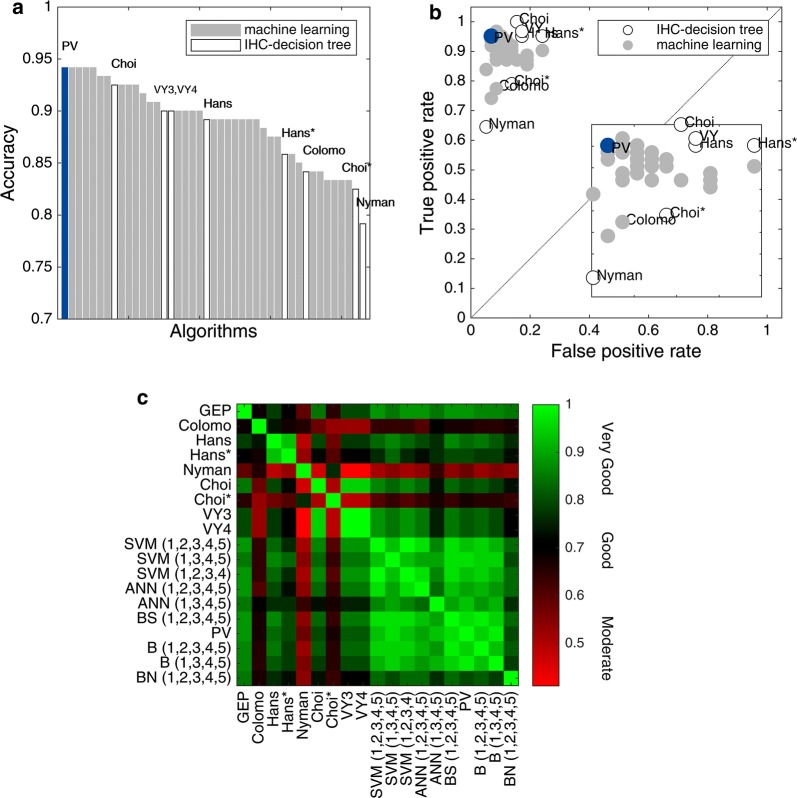Fig. 1.
Performance and agreement comparison of IHC-decision tree and machine learning algorithms. a Accuracy ranking. Machine learning (gray bars) and IHC algorithms (white bars) were ordered by accuracy. PV, ANN (1,2,3,4,5), BS (1,2,3,4,5), SVM (1,2,3,4,5), and SVM (1,2,3,4) algorithms showed the highest accuracy, whereas Hans ranked in 21th place. b ROC space. Machine learning algorithms (gray markers), particularly PV (blue marker), ANN (1,2,3,4,5), BS (1,2,3,4,5), SVM (1,2,3,4,5), and SVM (1,2,3,4) allocated in the far left-hand side of the graph, suggesting a better performance when compared with IHC-decision tree algorithms (white markers). Nyman, Colomo and Choi* showed a more conservative performance. c Agreement heatmap. Scale represents moderate (0.41 ≤ κ ≤ 0.60), good (0.61 ≤ κ ≤ 0.80), to very good agreement (κ > 0.81) with red, black and green, respectively. Machine learning algorithms provided an almost perfect agreement with GEP, being ANN (1,2,3,4,5), BS (1,2,3,4,5), PV, SVM (1,2,3,4,5), and SVM (1,2,3,4) with the highest values (all with κ = 0.88, P < 0.001). A very good agreement within machine learning algorithms was observed (κ: 0.77–1.00). The concordance between IHC-decision tree algorithms was from moderate to good (κ: 0.41–0.79), except for Choi having a very good agreement with both VY3 and VY4 (κ = 0.95, P < 0.001). Numeric Tags 1 = CD10, 2 = BCL6, 3 = FOXP1, 4 = GCTE1, and 5 = MUM1. PV: Perfecto–Villela; B: Bayesian; BS: Bayesian simple; BN: Naïve Bayesian; ANN: artificial neural networks; SVM: support vector machines

